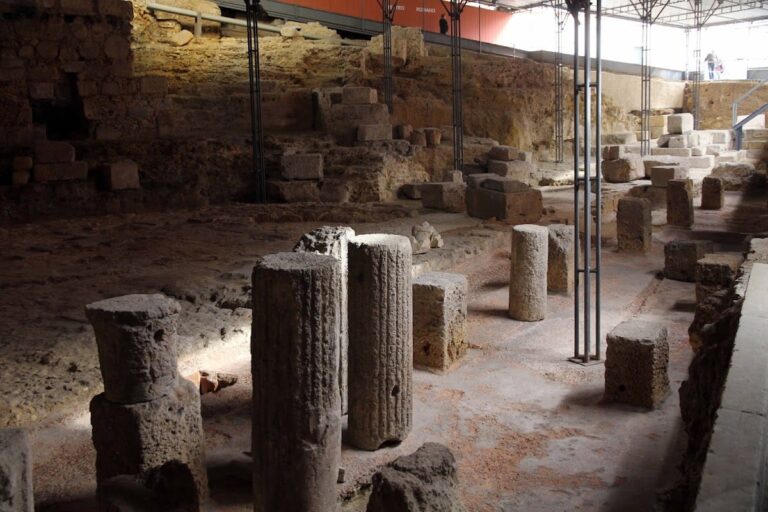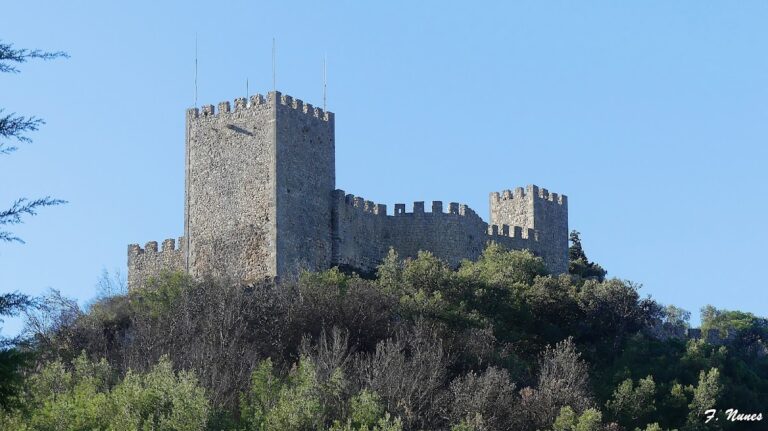São Jorge Castle: Historic Fortress and Landmark in Lisbon
Visitor Information
Google Rating: 4.4
Popularity: Very High
Google Maps: View on Google Maps
Official Website: castelodesaojorge.pt
Country: Portugal
Civilization: Medieval Islamic
Remains: Military
History
São Jorge Castle is located on a prominent hill in Lisbon, Portugal’s capital city. Human presence on this site dates back to at least the 8th century BC. The earliest fortifications were established in the 2nd century BC during Roman times, when Lisbon was known as a municipality from 48 BC. Before the Romans, the hill was occupied by Celtic tribes, Phoenicians, Greeks, and Carthaginians, reflecting its long-standing strategic importance.
Following the Roman period, the site came under the control of the Suebi and Visigoths. In the early Middle Ages, Moorish forces, particularly Berber groups, built significant fortifications including the “Cerca Moura” walls in the 10th century. These walls formed the core of the defensive structures that would later be expanded.
In 1147, the castle was captured from the Moors during the Siege of Lisbon. This event was led by Afonso Henriques, the first King of Portugal, with the support of northern European crusaders. The conquest was part of the Christian Reconquista and linked to the Second Crusade. After this, the castle became a royal palace, military barracks, and housed the Torre do Tombo National Archive until the 1755 earthquake.
Around 1300, King Denis I renovated the castle, transforming the Moorish alcáçova (the fortified royal residence) into a royal palace. Later, King Ferdinand I ordered the construction of the Cerca Fernandina between 1373 and 1375. This large walled enclosure featured 77 towers and 34 to 38 gates, enclosing most of Lisbon and replacing older walls.
In the late 14th century, King John I dedicated the castle to Saint George, reflecting his marriage alliance with England and the saint’s popularity among knights. The castle also housed a royal menagerie in the early 15th century, including two Barbary lions brought after the conquest of Ceuta in 1415. These lions were kept in the Casa dos Leões within the palace.
The castle was the site of Vasco da Gama’s reception in 1498 and hosted some of the earliest Portuguese theater performances in 1502. However, its importance declined after the early 16th century with the construction of the Ribeira Palace. The castle suffered damage in the 1531 earthquake.
King Sebastian ordered the rebuilding of royal apartments in 1569, but his death and the ensuing dynastic crisis halted these works. During Spanish rule, the castle was converted into military barracks and a prison. After Portugal regained independence in the mid-17th century, restoration and fortification efforts resumed, involving architects Nicolau de Langres and Mateus do Couto, continuing into the 18th century.
The 1755 Lisbon earthquake caused severe damage to the castle and its buildings, leaving many in ruins. Despite this, the site remained a military garrison and hosted the Casa Pia charitable institution from 1780 to 1807. In 1788, Portugal’s first geodetic observatory was established atop one of the castle’s towers, known as the Torre do Observatório.
By the 1930s, the castle was obscured by later additions. Extensive restorations in the 20th century, particularly under Salazar’s government, removed incongruous structures and partially restored the Recolhimento, a former religious building. Since 1942, the castle has been managed by Lisbon’s city government. In 1998, parts of the castle were adapted into the Olissipónia museum. The castle and its surrounding walls were included in a special protection zone in 2006, though this designation was proposed for shelving in 2011.
Remains
São Jorge Castle occupies Lisbon’s highest central hill and has a roughly square plan. The main castle, or castelejo, sits at the northwest corner of the citadel, its highest point. The complex includes ancillary buildings, gardens, and a large terraced square with panoramic views of the city and the Tagus River.
The main entrance dates from the 19th century and features a gate bearing the Portuguese coat-of-arms, Queen Maria II’s name, and the date 1846. This gate leads to the Praça d’Armas, a square decorated with old cannons and a bronze statue of Afonso Henriques, a 19th-century replica by António Soares dos Reis.
Near the main square are remnants of the royal palace, including some walls and reconstructed rooms such as the Casa Ogival. This space now hosts the Olissipónia multimedia show. The medieval castle itself is rectangular with ten towers. A dividing wall with a tower and door splits the courtyard into two halves.
Visitors can access stairways leading to battlements and towers, which offer extensive views. The Tower of Ulysses, formerly known as Torre do Tombo, contains a camera obscura installed in 1998. This device projects a 360-degree panorama of the city and river.
Defensive features include a barbican, a fortified outwork, on the southern and eastern sides. This structure was designed to prevent siege engines from approaching the walls. The northern and western sides benefit from natural protection by steep slopes. A partially dry moat surrounds the castle, with a stone bridge leading to the main entrance.
A long curtain wall extends downhill on the west side, ending at the Torre de São Lourenço. This tower guarded a gate in the Cerca Fernandina walls, the large late 14th-century enclosure that surrounded Lisbon with 77 towers and dozens of gates over a 5,400-meter perimeter. The Cerca Fernandina partially replaced older Moorish walls.
The castle’s walls and towers were extensively rebuilt and heightened during 20th-century restorations. These interventions largely shaped the current medieval appearance rather than preserving an unaltered original state.










